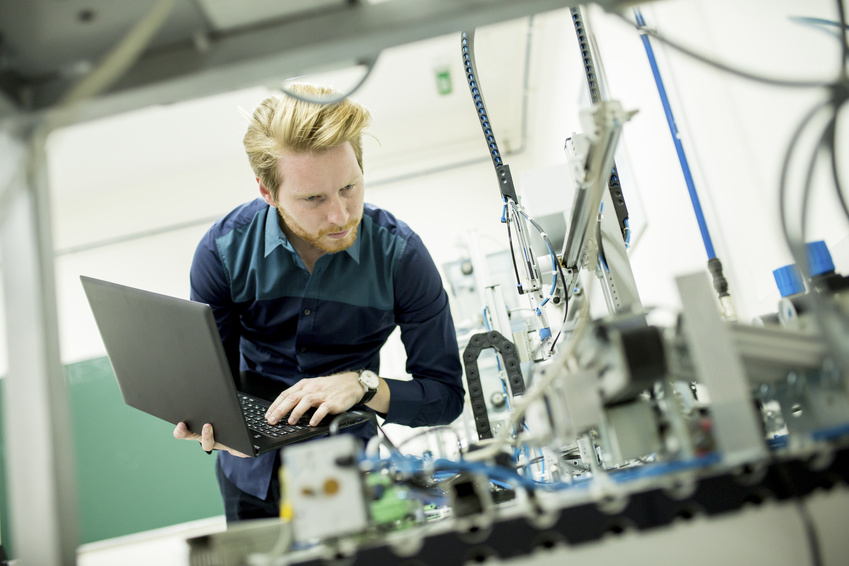You have to be extremely precise when manufacturing printed circuit boards (PCBs) to make sure all the boards are the same and work as intended for a project. Any changes in the boards, even minute ones, can affect the efficiency of the boards and cause problems. At Hallmark Nameplate, we use an auto optical inspection system to check the boards to make sure they are made to the highest quality standards to meet your needs.
Why Perform an Auto Optical Inspection?
Circuit boards are a lot more intricate than they were just a few years ago. Boards now incorporate new surface mount technology than was previously used and this has caused the boards to be much more compact today – especially since the new technology has also increased the amount of soldering that needs be done to hold it to the board. Visually inspecting the boards is no longer a viable option to make sure everything is installed correctly on the PCBs because of all the materials on the circuit boards.
Performing an auto optical inspection ensures that imperfections that would be missed by the human eye are caught before the PCBs are sent to you for use in your products and equipment.
The Auto Optical Inspection Process
The auto optical inspection process uses computerized systems to compare and monitor the PCBs as they are being manufactured. The image of how the PCBs should look like is loaded into a computer. The image can be loaded using a “Golden Board” that the computer scans to collect the information it needs or an algorithm-based program is entered into the computer so the computer can create its own internal image.
As the PCBs are manufactured they are sent down a production line so images of them can be captured and sent to the computer where the captured image is compared to the stored image. There are two primary ways the images are monitored and compared with the main image to see if they have any defects or if they are good to send out to a customer.
- Template Matching: This happens when the captured image is compared to the stored image.
- Pattern Matching: Every image that is captured from both good and bad PCBs are stored in the computer. Every new image is then checked to see how they match up to previous images to see if a negative pattern is developing in the production process which distorts the PCBs as they are being produced.
The comparison and monitoring process is able to detect the slightest of defects that will affect the performance of the PCBs, and which cannot be detected by the human eye, like tiny scratches, nodules developing on the surface of the PCBS, and any stains on the boards. The process will also detect more common problems like misplaced, missing, or damaged components.
How to Capture an Image
An image can be captured using a single camera, or if a 3-Deimensional image is required, by a set of multiple cameras. The cameras must have the capacity to move so they can be adjusted to capture an Image of a PCB that has shifted on the production line. A shifted PCB board on the production line will throw the picture of it off- center if using a stationary camera and this will skew image. A skewed image is impossible to match up completely against the original image programmed into the computer and any defects might go undetected as a result.
A streaming video camera can also be used to capture multiple images. Individual frames in the video can be captured so they can be matched up to the original image in the computer.
Lighting is Important
A bright and stable light source is required to capture consistent images that can be compared to the original and other images. LED lighting is replacing fluorescent lighting since it lasts longer and maintains the light consistency needed to capture quality images. In some cases, infrared or ultraviolet light is used to detect certain types of defects that a white light won’t capture. The lights must also be placed in a position so they do not cause a shadow from the components to be cast upon the board.
When the Inspection Happens
The PCBs are inspected right after the components have been soldered to the circuit board. This ensures any problems can be caught as quickly as possible and fixed.




